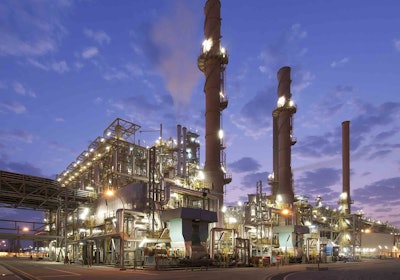
Saudi Arabia’s national oil company, Saudi Aramco, may be hedging its bets on an increasingly crowded industry.
After oil prices tanked in 2014, the company looked to diversity its portfolio towards the burgeoning chemical industry. Buoyed by low natural gas prices — thanks to the shale revolution — the chemical industry has been swept into a period of high growth. According to a recent report in the Wall Street Journal, chemical plant investments accounted for half of all U.S. manufacturing investments in 2016.
This wave of new facilities means that chemical capacity has been rising sharply — so much so that some major US producers have begun scaling back expansion plans.
The WSJ points out that this potentially oversaturated market could threaten Aramco’s upcoming IPO. In 2018, the company plans to list 5 percent of the company in an IPO worth $50-100 billion — the largest by market capitalization in history.
In addition to competition from chemical producers in the US, Aramco could also face worsening conditions in Asia, the intended target for many of its chemical exports.
According to the WSJ, China has boosted its oil-refining capacity in recent years to the point where it is 15 percent higher than the country’s petroleum consumption. This overcapacity has already prompted Aramco to rethink a planned $20 billion petrochemical and refinery joint venture with Petronas, a Malaysian oil and gas company.
Aramco, however, is still steaming ahead with its construction of the world’s largest chemical plant ever built in a single phase: Sadara Chemical. The $20 billion complex is a joint venture with Dow Chemical. So far, 22 of its 26 plants have begun production.
But, Aramco plans to triple its petrochemical output by 2030 — well past when many other major petrochemical plants are projected to be online. By that time, the market could also be awash with chemicals from America.






















